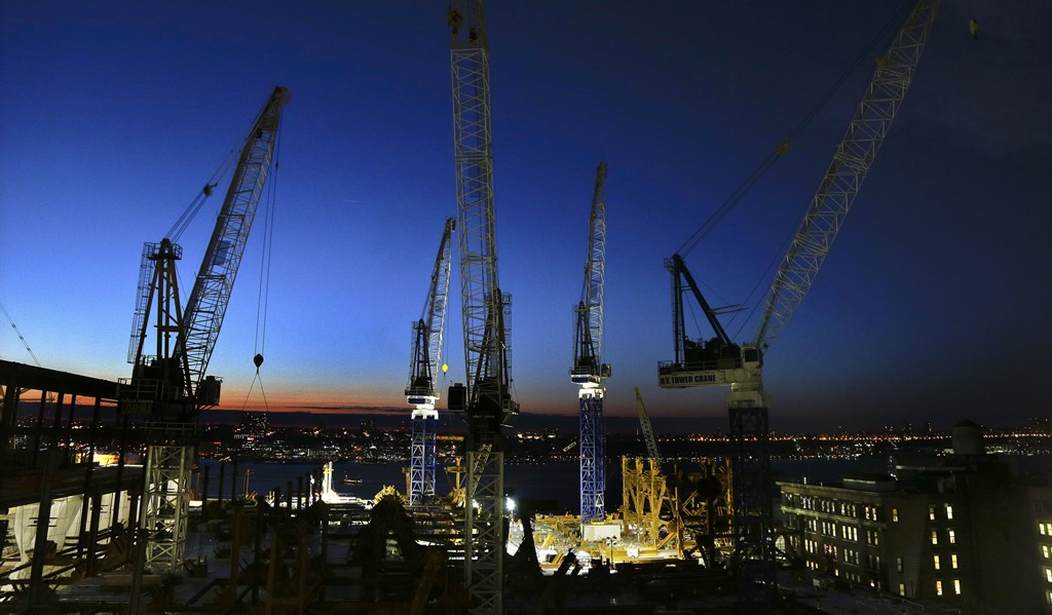When we think about the ways that America competes in the global economy, trade, taxes, and regulations are the primary issues that come to mind. Often overlooked is the role that immigration can play, particularly when it comes to attracting foreign investment that creates jobs and boosts the U.S. economy. That oversight has allowed a counterproductive assault on the EB-5 investor immigrant program largely to fly under the radar.
The EB-5 investor immigrant program is a strictly merit-based system that allocates for foreign investors a relatively small number - currently capped at 10,000 - of the approximately 500,000 immigrant visas awarded annually. The goal is to attract successful individuals, often looking to escape poor or oppressive countries, willing to add their investment to the U.S. economy.
The program requires a minimum investment of $1 million - or $500,000 for designated Targeted Employment Areas that are either rural or feature high unemployment - that creates at least 10 American jobs. While any new worker can contribute and provide a net gain to the U.S. economy, EB-5 is thus unique among employment-based visas in that it requires no competition with domestic workers.
The program has been a huge success to date. A recent report from Economics and Policy Resources found almost $11 billion in capital investment brought in through the regional center program, which allows for combining EB-5 investment to facilitate larger projects, during federal fiscal years FY2014 and FY2015. That represents approximately two percent of all foreign direct investment net flows during that period. The report also found that regional center projects supported over 355,000 jobs, accounting for about six percent of all private sector job growth, during that same period.
Past studies have reported similar findings confirming the economic significance of the EB-5 program. But you can also see the impact more tangibly by visiting Hudson Yards in New York City. The impressive development is a sight to behold, providing housing, shopping, tourism, and modern office space attracting numerous global headquarters.
Recommended
Without EB-5, Hudson Yards wouldn’t exist. The location would instead still be just an eyesore train depot providing limited economic benefit. The massive steel platform needed to allow the project to be erected over the existing depot proved too much to finance through traditional lending, which is why previous winning bidders dropped out before the project was able to take off once the strategy of using EB-5 was discovered.
EB-5, in other words, doesn’t just grow the nation’s capital stock but expands the types of projects that are viable. As another example, in Washington D.C. EB-5 has facilitated the revitalization of depressed neighborhoods and much-needed expansions to the housing stock.
But all this is in jeopardy. The Office of Management and Budget is currently reviewing an Obama-era regulation that would make it a lot more difficult for developers to raise EB-5 capital.
Is there room to improve EB-5? Absolutely.
A huge backlog in the processing of green cards is discouraging investors. Someone looking to provide a better life for their children in America isn’t going to want to wait15 years after spending their money for that to actually happen. That’s ultimately our loss, as there are many other countries happy to take and benefit from their capital. Raising the yearly cap would allow the program to better keep up with demand while further boosting GDP. And a long-term reauthorization of the program would ease the uncertainty that threatens to stifle the flow of funds into the program.
These and other reforms would be best carried out through Congress, where the many different stakeholders can work together to find solutions that benefit the industry, investors, and job seekers alike. The Trump administration can help that process along by pulling the Obama-era rules that threaten to preempt the political process.
Andrew F. Quinlan is the co-founder and president of the Center for Freedom and Prosperity (@cfandp).

























Join the conversation as a VIP Member